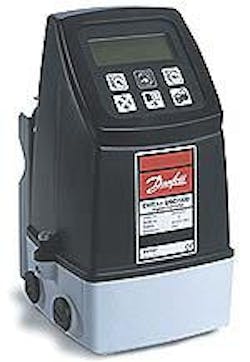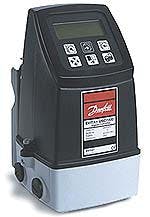Oxygen Profiling Improves Aeration Processes
In recent years it has become common for wastewater treatment plants to control the dissolved oxygen (DO) content in their aeration processes. While some wastewater treatment plants still measure DO levels once a day or a few times a week with hand held oxygen meters, more are using on-line equipment.
In the beginning these meters were unreliable, but plants now have access to reliable DO meters for on-line monitoring, helping them improve their wastewater treatment processes and save energy sometimes as much as 50 percent.
A new trend in wastewater treatment is the use of several DO meters per basin or even per track to obtain an oxygen profile of the treatment basin. A new technology introduced by Danfoss is designed to provide cost effective oxygen profiling across aeration basins, providing improved plant performance and increased energy savings.
It is well known that the demand for oxygen changes throughout an aeration basin. At the inlet of the basin the demand is high, whereas at the end of the process there is only little or no oxygen demand. A treatment basin's oxygen demand also changes with daily load cycles. A load factor change of five over 24 hours is not unusual.
The intent of introducing oxygen profile control is to equalize the level of dissolved oxygen throughout the basin. This type of control introduces a few control changes (including modulating control valves), but provides two major advantages: better use of the aeration basin and additional energy savings.
Oxygen profile control has already been introduced at wastewater treatment plants both in the U.S. and in Europe. The Lindau wastewater treatment plant in Germany saw an immediate 20 percent energy savings, when compared to the performance of a system using just one DO meter.
Danfoss is the manufacturer of the Evita® Oxy Dissolved Oxygen meter. The company recently released the USC 7000 Controller, which is designed to network DO sensors. The new controller is designed to take advantage of the built-in Hart® communication protocol which is embedded in all Evita® Oxy sensors.
The USC 7000 platform is able to communicate with up to 15 sensors using only two wires. The Hart® platform allows for a parallel connected PLC system enabling all 15 sensors to be operated and read from both the USC 7000 and the plant control system simultaneously. Along with DO and temperature readings, users can change parameters and monitor the remaining life of the Clark cells for all 15 monitoring points.
The Evita® Oxy dissolved oxygen sensor features self contained, self cleaning sensors and a two-wire power and signal connection cable. The sensors provide automatic calibration, so the entire installation and calibration process can be performed without a manual in minutes.
The sensors are designed so that calibration is only required twice a year. The automated calibration is initiated by tilting the sensor a tilt switch begins the calibration routine. Cleaning is required only two or three times per year and consists of wiping the sensor with a cloth. The sensor's self-cleaning ball design does not require compressed air, fresh water, grinding stones or chemicals.
Replacement of the sensor is required every two or three years, and takes the place of regeneration. The collar holding the measuring cell in place can simply be unscrewed and a new cell inserted.
The measuring cell comes with a pre-stressed membrane, preventing any percolation of water. An alarm triggered by any membrane leakage is sent automatically to the controller. A built-in and extremely accurate Pt 1000 temperature sensor makes sure that the permeability of the membrane is independent of ambient temperature and thus constant. WW

